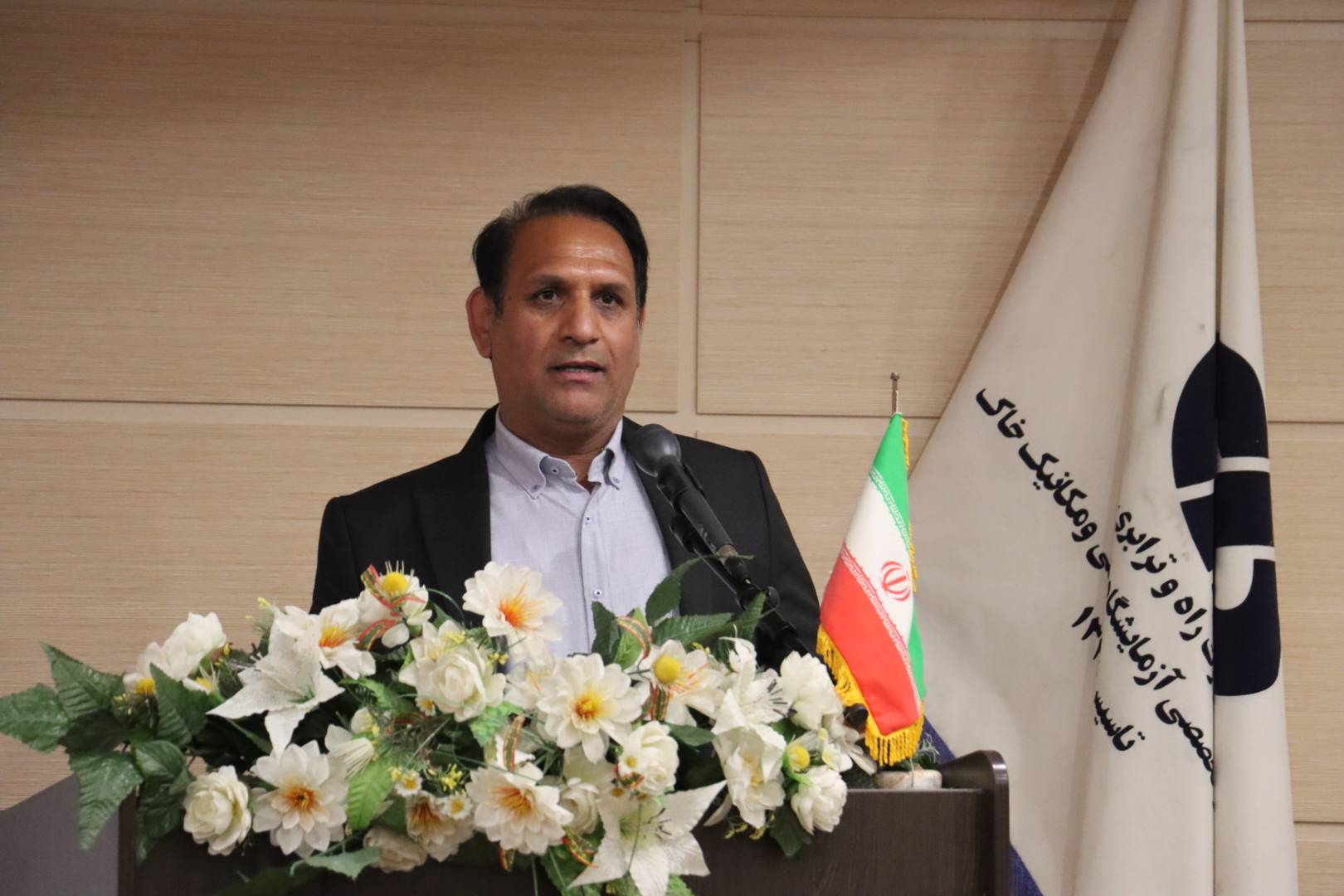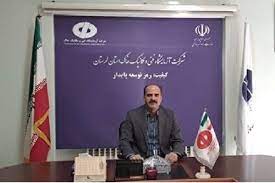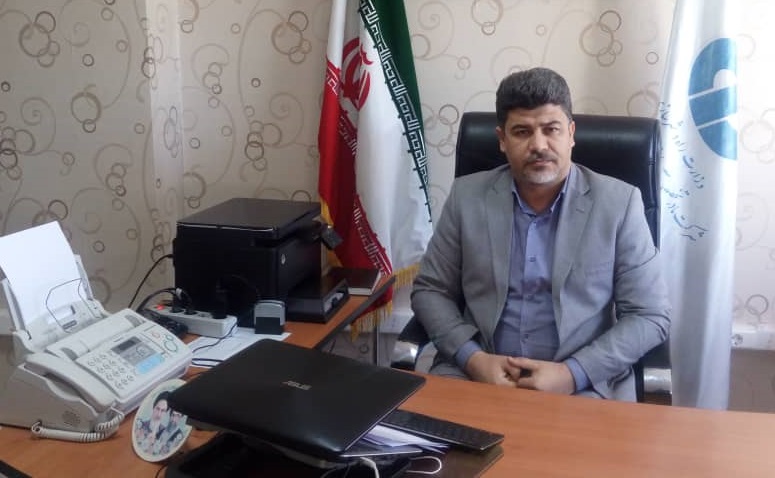Dimensional calibration laboratory
2017-07-01 06:01:20 | The main basins of the business are the Technical and Soil Mechanics Laboratory | ID : 2283 | يزور : 8087
Calibration Laboratory of Soil Technical and Soil Mechanics Laboratory of Ministry of Roads and Urban Planning, using expert and experienced experts, modern machines and obtaining official certification from National Standards Organization and National Center of Certification of Iran in February 2011 began its activities. The main goal of the establishment of the calibration laboratory as one of the most specialized sections in the collection of the Soil Mechanics and Laboratory of the company is to meet the needs of internal and external customers in the field of calibration of laboratory equipment and quality control of related projects in the Ministry of Roads and Urban Development. The laboratory provides services in calibration services in various quantities including force, temperature, mass, volume, dimensions, pressure, loading and chemical quantities. The calibration of the equipment in the laboratory of mechanical and technical soil is carried out in accordance with regional, national or international standards.
{tab title="Dimensional calibration laboratory" alias="Dimensional calibration laboratory"}
1-Dimensional calibration laboratory
In the dimensional calibration laboratory ,the amount of deviation and expanded uncertainty are read at controlled temperature 20°C (centigrade) and the calibration of the equipment is by one or combination of several standard Gauge blocks, at least at a precision level of Grade 1 have been valuated and determined.
For measuring instruments calibration with sensitive calibrators, the installation location of the calibrator devices should be insulated to vibration and the vibration relevant to the System and calibrator devices are less than the amount specified be in the relevant manual. Also for the effect of temperature and variations temperature with length of calibration and dimensional quantities, the laboratory temperature should be kept to 20 °C with a range of oscillations a constant degree.
Also, the amount of humidity, airborne dust and carbon dioxide changes should be carefully controlled for their impact on the accuracy of the equipment.
Dimensional calibration laboratory of the company: to the reason for the need of accurate measurements (at 0.5 micrometers), the temperature precise control and
isolation from the point of view the vibration and other environmental influences from specific techniques and advanced equipment that automatically creates and maintains the vital environmental in the laboratory.
1-1-Laboratory sieves calibration
Test sieves are often used to grade or separate the aggregates of various sizes.
The accuracy of the sieve test depends on the accuracy of the size of the sieves apertures. The sieves are deformed for the continuous use or overweight of the screened material, and their aperture dimensions change.
The test sieves are calibrated according to the national standard 5002, equivalent to the international standard ISO 3310 and ASTM E11.
In the report of the calibration results, the apertures average, the standard deviation and the wire average diameter are expressed in longitudinal and transverse (texture) directions.
Finally, if the dimensions of apertures the are out of the specified standard range, the sieve will be rejected and must be replaced with a new sieve.
Sieves calibration is done according to the standard by the video measuring
machine (VMS), which determines the size of the wire apertures , based on
the sieve nominal size of the using video measuring machine (VMS) .
Video measurement machine capabilities
-Possibility to install a 3D probe to measure the dimensions of the internal
sections and other user needs.
-Accurate calibration, very fast and reliable.
-Small space and workability even in non-test environments.
-Possibility to measure with high light or prophylactic light.
-Adjustability of light system by software.
No limitations on the dimensions of the parts to be measured.
-Possibility of providing cloud points of a piece for reverse engineering and
rebuild in the modeling of software applications
- Lens changer for maximum viewing angle
1-2 Calibration of caliper types
The caliper is used to measure internal and external dimensions of objects.
Measuring external thicknesses such as the diameter and length of a piece and
measuring internal distances, such as the inner diameter or interior spaces inside
the pieces, as well as the height of the parts with the device done .Depending on the type, the calipers have the ability to measure one, two with all three internal,
external, and depth dimensions, and their display can be in vernier , analog, or digital forms.
For vernier calipers calibration at a temperature of 20 ° C (Celsius) with amaximum variation temperature up to +-1 C ° (centigrade), the caliper calibration
error is, by one or a combination of Gauge Blocks are evaluated and
determined at least in the precision level of 2 Grade.
{tab title="Mass and Volume Calibration Lab" alias="Mass and Volume Calibration Lab"}
1-Mass and Volume Calibration Lab
Measurements of mass and volume are widely used as reference standards throughout industry to ensure they are correct and accurate. In order to comply with the quality assurance criteria, measures must be calibrated to demonstrate traceability to national and international standards. Mass and Volume Calibration Lab of Technical and Soil Mechanics Laboratory are accredited by NACI.
Owning to the expertise of our professionals, we have become a well-known service provider of Mass and Volume Calibration such as Weight Calibration, Weighing Balance Calibration, Glassware Calibration, etc.
The company offers both in-lab calibrations and on-site services. There are 31 laboratories across the country. In addition, all calibration reports are electronic. This means you receive your reports the same day the calibrations are completed and you can quickly access your documents via our certificate management system.
1-1-Weight Calibration Service
Accurately calibrated weights are the foundation for accurate weighing results. Weights are the most frequently used and most important equipment for testing scales and balances.
Our mass calibration service has been accredited by NACI for weights over a broad range from 1 mg to 20 kg. The mass calibration lab is equipped with Mettler Toledo E2 Class weight set ranging from 1 mg to 10 kg, Mettler Toledo F1 Class weight set from 1 mg to 20 kg and Mettler Toledo balances.
Appropriate balances are used to perform comparison weighing against weights with known and documented deviations. Balances are sensitive to weight changes of less than one-half of the tolerance. The result is documented in calibration certificates with details of environmental conditions, uncertainty of the measurement, identification of the balance used in the calibration and additional information according to ISO/IEC 17025.
1-2-Weighing Balance Calibration Service
Balances or scales are used in many businesses and industries such as laboratories, food services, transportation, and industrial settings. The accuracy of balances and scales becomes less reliable over time. This is the result of normal wear and tear caused by regular use and external factors such as mechanical shocks or hazardous environments.
Periodically scheduled balance calibration in combination with frequent routine testing greatly enhances its weighing accuracy. To check the reading of a balance or scale, a reference weight is placed on the pan. The error is defined as the difference between the measured value and the true value (the reference weight). E2 Class weight set is used as reference standards to calibrate high-resolution balances. To calibrate lesser class balances, F1 Class weight set is used.
At the end of balance calibration, a certificate is created which reports the balance readings and compares them to a reference value. Applied tolerances result in a Pass/Fail statement.
1-3-Volume Calibration Service
Volumetric instruments are widely used as reference standards throughout industry, for example in medical, pharmaceutical and petro-chemical industries. The most common types of volumetric glassware are volumetric pipets, burettes and volumetric flasks. These instruments are calibrated at a specific temperature to deliver or contain very precise amounts of liquid. Our calibration service has been accredited through NACI to cover ranges of 10 µl to 20 liters.
Volumetric measurement is normally determined gravimetrically. To calibrate burettes and all types of pipettes with 100 ml capacity, normally balance with readability of 0.1 mg is used. In the calibration of volumetric glassware larger than 200 ml capacity, an appropriate balance with a capacity of 1 kg or more is used.
The correct calibration and subsequent use of volumetric glassware is critically dependent on temperature. Volumetric glassware is normally calibrated at 〖20〗^0 C. Due to the superior environmental controls, standard procedures and advanced technologies, we provide highly reliable calibration instrument services.
{tab title="Temperature calibration laboratory" alias="Temperature calibration laboratory"}
1-Temperature calibration laboratory
In most of industry environments one of the essential factors and quantity that is required to be calibrated and needed to be under control is temperature.
temperature is a comparative quantity and relative too, in other words an object can be colder than another and also be warmer in comparison with another object
temperature measurement can be divided into three categories:
1- temperature mechanical measurement
2- temperature electrical measurement
3- temperature radiation measurement
equipment calibration is based on operating instruction according to national and international standards.
the temperature range that is used for variety of contact thermometers and temperature environments is -30 c to 1100 c
environmental condition of temperature calibration lab , is creating a temperature between 20 c and 30 c with and +,-2c variation , that is carefully controlled .
1-1-calibration of liquid-in- glass thermometer
for measuring temperature we use of thermometer. simplest thermometer is liquid-in-glass thermometer that is consist of thin tube which has small tank.
inside the thermometer is filled by alcohol or mercury that by absorbing heat or losing heat mercury level which is inside the tube will be altered , and from this process the object's temperature will have determined.
periodic inspection and inspection during operation is necessary for liquid-in-glass thermometer
liquid-in-glass thermometers can be calibrated by comparison with another calibrated thermometer through a reference standard(often it is a thermocouple or port, which is proportional to the thermometer)
and suitable isothermal environment usually is oil bath ( for positive temperature) and alcohol bath for ( negative temperature)
1-2-Thermocouple calibration
thermocouples are temperature sensors , that are using for temperature measurement , and they have vast application in industry because of being simple and reliable.
in sensitive and important measurement also we can use of thermocouples
measuring temperature process by thermocouple is a electrical method to measure temperature
temperature measurement by thermocouple is indirect in other words temperature is measured by converting the voltage to the corresponding temperature.
due to overuse of thermocouples ,fatigue makes drift in shown temperature quantity by thermocouple, therefore to ensure of the accuracy of temperature value and its traceability it is essential that thermocouples periodically be calibrated.
thermocouple calibration is possible by comparison with a more accurate thermocouple or standard resistance thermometer or fixed point thermometer in isothermal environments includes furnace or oil bath
1-3-calibration of temperature environments
temperature environments includes variety of temperature environments that is used in test calibration labs or industry and non-industrial process
some of these temperature environments are: electric furnace , ovens ,bain-marie bath ,labs refrigerator and fixed furnace (used for thermocouple , other temperature sensor calibration ), black body furnace (used for pyrometer) , the temperature environments that are equipped with antifreeze . silicone oil, fluid powder.
temperature environments calibration is possible by comparison with temperature sensors output signal , or by shown temperatures quantity in temperature display with output signal of a reference standard thermometer
uniformity and sustainability report is essential for temperature environments
{tab title="pressure calibration laboratory" alias="pressure calibration laboratory"}
1-pressure calibration laboratory
pressure is a one of the most important quantity that it is widely measure in the industry. in many industries correct measurement of pressure and its traceability is so important
. many equipment with their special advantages and disadvantages have been created for pressure measurement , that are different with together by considering measuring range ,sensitivity ,dynamic response and their technical specification.
there are also different techniques for measuring pressure and vacuum.
calibration laboratory of technical and soil mechanics laboratory can calibrate variety of barometer and vacuum-gauge.
1-1-Calibration of Pressure Gauges by Elastic components
The pressure gauges by elastic components are pressure gauges made of a sensor of Bourdon tube, Bellows or Diaphragm. When the fluid under pressure measurement enters into these sensors and the transfer of its effect through the elastic components (mechanical), the fluid pressure is measured and displayed.
Pressure gauges are divided into two groups: normal and reference.
Calibration of this equipment by deadweight or Pressure weighing calibrator and by maintaining the temperature conditions 22±3 degrees Celsius with a maximum variation of one degree Celsius per hour for reference barometers and with a maximum variation of two degree Celsius per hour for normal barometers and Relative humidity should be less than 60%.
{tab title="Force Calibration" alias="Force Calibration"}
1-Force Calibration
Force calibration is applied to devices used in force measurement. This equipment includes loud cells, proving rings and force gauge devices which are used in many industries.
Many test labs in the construction industry use compression strength testing devices. Measurement of force is also used in power transmission and transportation system, cable manufacturing and power generation. Due to the active participation of Technical And Soil Mechanics Laboratory Co. in the quality control of construction projects and the existence of more than 1200 force equipment in the provincial branches of the company, force calibration is one of the main parts of the calibration laboratory. The laboratory, with the most complete calibration equipment, is ready to provide services to customers inside and outside the company.
1-1-Force Equipment
Force equipment is used to test the tensile strength, compressive strength and mechanical properties of materials. Mechanical properties is a property that involves a relationship between stress and strain or a reaction to an applied force. Examples of mechanical properties are the modulus of elasticity, tensile strength, elongation, hardness and fatigue limit.
Force equipment can be mechanical, hydraulic, pneumatic, and electrical or a combination of them. This equipment is portable or non-portable and the force rate applied to the test and calibration must be controlled. Non-portable equipment must be calibrated after each displacement.
1-2-Load cells
A transducer is a device that converts energy from one form to another. Usually a transducer converts a signal in one form of energy to a signal in another. A load cell is a transducer that is used to create an electrical signal whose magnitude is directly proportional to the force being measured.
A proving ring is a device used to measure force. It consists of an elastic ring in which the deflection of the ring when loaded along a diameter is measured by means of a micrometer screw and a vibrating reed.
{/tabs}
-
 پیام ملی شرکت آزمایشگاه فنی و مکانیک خاک به پویش نه به تصادف/ پویش ملی « ایمنی و سلامت سفر» گامی مؤثر برای کاهش تصادفات نوروزی2025-03-30 12:46:47
پیام ملی شرکت آزمایشگاه فنی و مکانیک خاک به پویش نه به تصادف/ پویش ملی « ایمنی و سلامت سفر» گامی مؤثر برای کاهش تصادفات نوروزی2025-03-30 12:46:47 -
 ثبت رکورد 448000 هزار مورد آزمایش فنی و تخصصی در استان خراسان جنوبی2025-03-30 12:41:29
ثبت رکورد 448000 هزار مورد آزمایش فنی و تخصصی در استان خراسان جنوبی2025-03-30 12:41:29 -
 80000 مورد آزمایش کنترل کیفی در پروژههای عمرانی گلستان به ثبت رسید2025-03-30 11:02:24
80000 مورد آزمایش کنترل کیفی در پروژههای عمرانی گلستان به ثبت رسید2025-03-30 11:02:24 -
 131000 مورد آزمایش فنی و تخصصی در استان لرستان به ثبت رسید2025-03-29 10:50:35
131000 مورد آزمایش فنی و تخصصی در استان لرستان به ثبت رسید2025-03-29 10:50:35 -
 ثبت بیش از 120 هزار مورد آزمایش کنترل کیفی در پروژههای عمرانی کردستان2025-03-29 10:22:54
ثبت بیش از 120 هزار مورد آزمایش کنترل کیفی در پروژههای عمرانی کردستان2025-03-29 10:22:54




